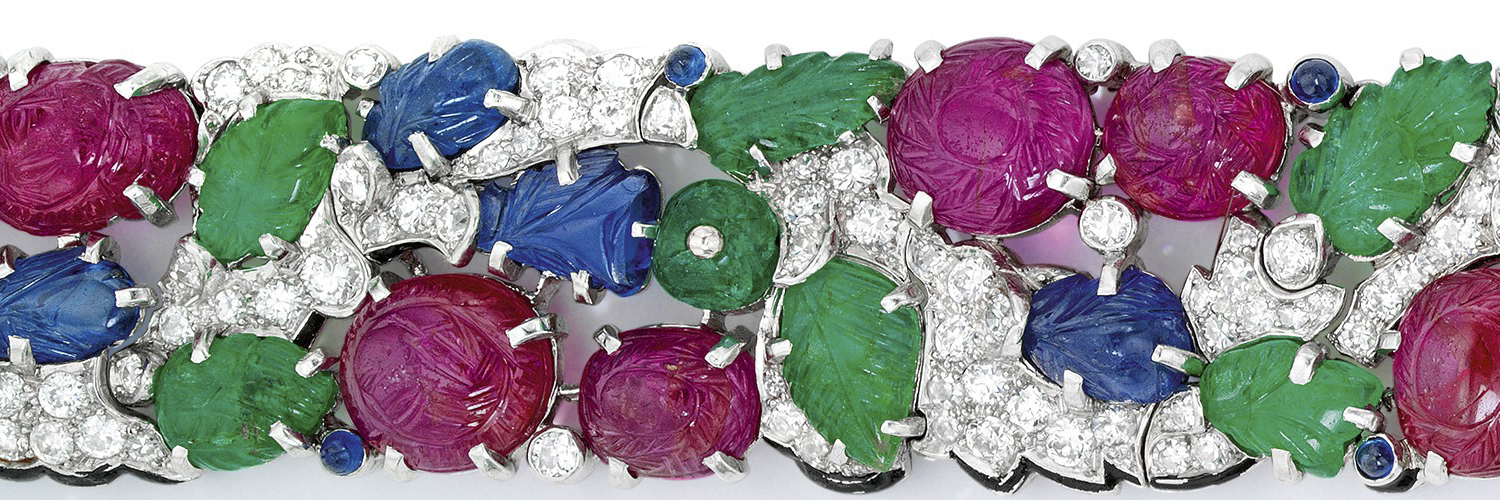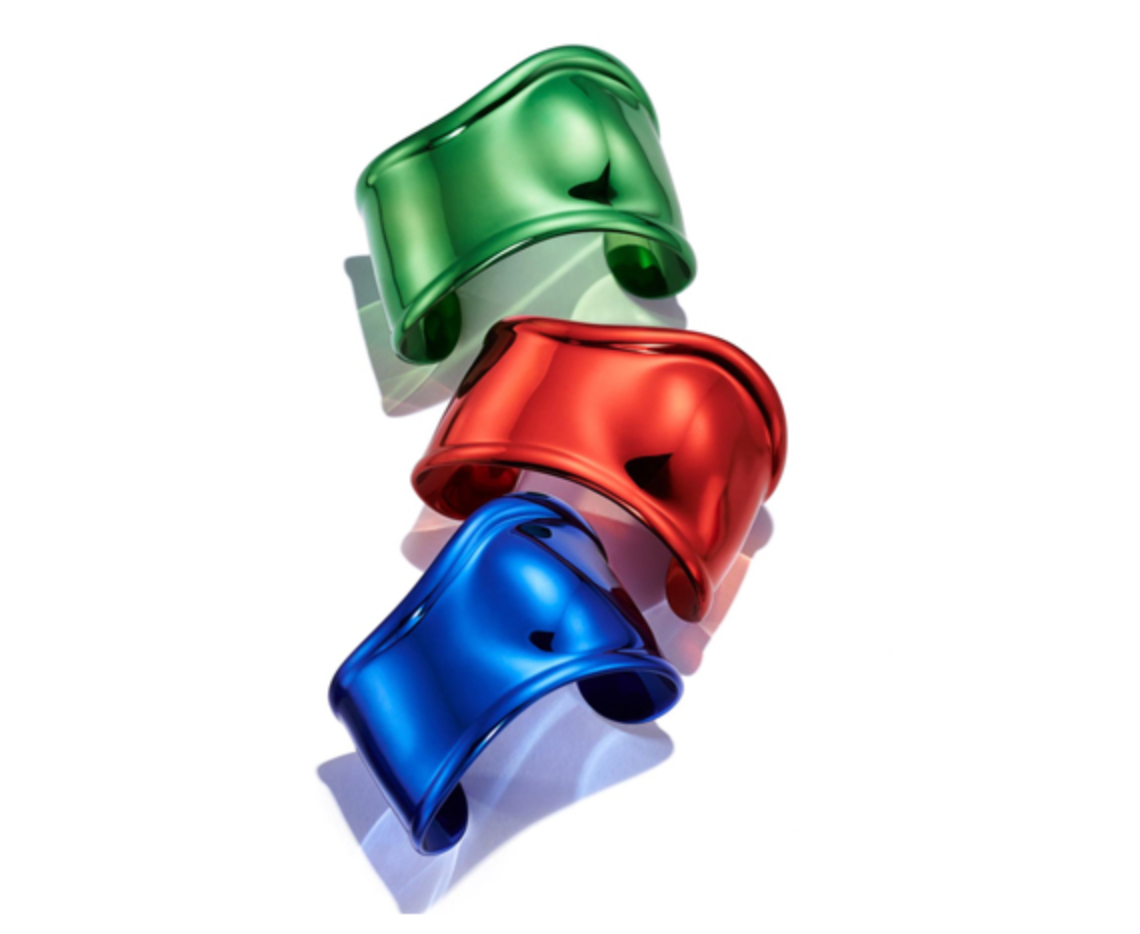Stay well and adorned, x



DBC Darlings,
As we sheltered in place, something remarkable happened in the jewelry world. Sotheby’s set a record for the highest price paid for any jewel sold in an online sale: more than 1.3 million dollars.
The extraordinary, record-breaking jewel (pictured above) is a strap bracelet designed by Cartier in 1930. The jeweler, who pioneered the use of platinum in jewelry design, used the precious metal to weave diamonds and enamel with rubies, sapphires, and emeralds carved in the Mughal-style. Known today as “Tutti Frutti,” because of the way in which carved gemstones are arranged in a fruit-basket formation, this jewelry style was Cartier’s most significant contribution to the Art Deco era.
The vibrant and polychromatic combination of colors (inspired by the sets and costumes in Serge Diaghilev’s Ballet Russes) fit well within the Art Deco vernacular, but the bracelet’s curvilinear design departed from the style’s precise and angular geometry. Its delicate curves recall the garland style (also known as Edwardian), popularized by Cartier at the turn of the 20th century, which, reinvented 18th-century French Rococo jewelry designs with platinum rather than silver.
With this bracelet, Cartier did more than combine decorative styles and precious gemstones. The jeweler combined eastern and western influences—the exotic with the modern—to create extraordinary works of art. The result was something entirely innovative, and, arguably, record-breaking from its very beginnings.

At the time it was designed, Europeans were as transfixed by Indian jewels and gemstones as the Indian elite and maharajas were with European jewelry design. Thus, a Tutti Frutti bracelet is not only an exquisite form of adornment, it is a passport that offers us entry into a different time and place, allowing us to better see and make sense of our world today. That’s why it’s of no surprise this jewel sold during a period of social isolation, and without being seen, touched or tried on in person: it allows one to travel the globe without restriction or worry.
Here’s where my mind took me when I saw the bracelet: the brightly colored, copper reinterpretations of Elsa Peretti’s beloved Bone cuff, which Tiffany & Co. just released to commemorate the iconic design’s 50th anniversary. The hues of the special-edition cuffs are as bold and daring as those found in Cartier’s Tutti Frutti bracelet. Like Peretti herself (who will be the focus of an upcoming exhibition at the MFA Boston), the cuffs are audacious and courageous.

Unlike Cartier’s Tutti Frutti creations, the lines of Peretti’s designs resemble the lines of the human body and contour to its form.* But in a manner similar to the Tutti Frutti bracelet, Peretti’s reimagined cuffs capture—and recapture—a bygone time and a sense of empowerment, it also transports us. This time toward the future.

*Japanese fashion photographer, Hiro Wakabayashi, with whom Peretti has been collaborating for decades, exquisitely details this line and contour in his work.
Stay well and adorned, x
